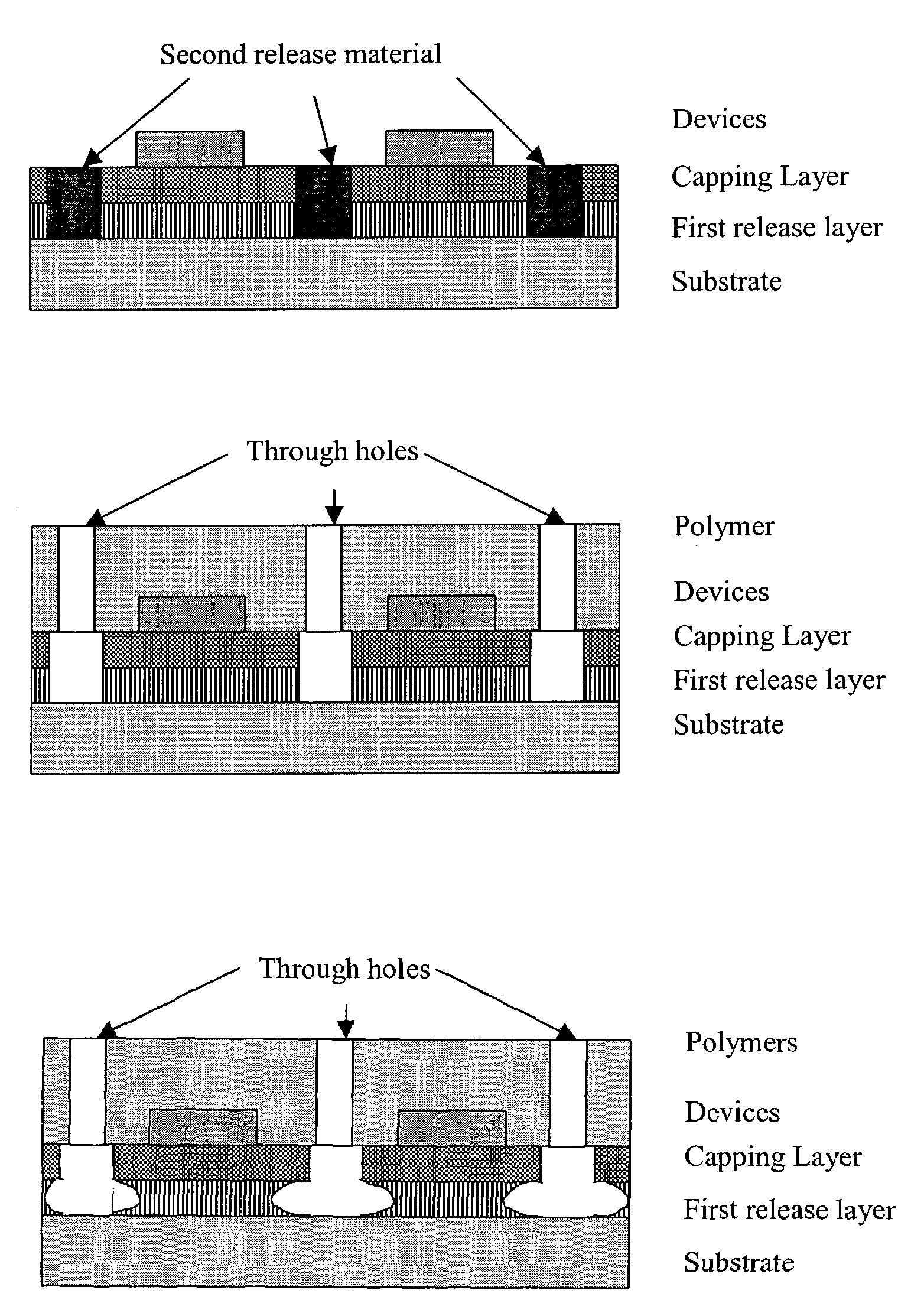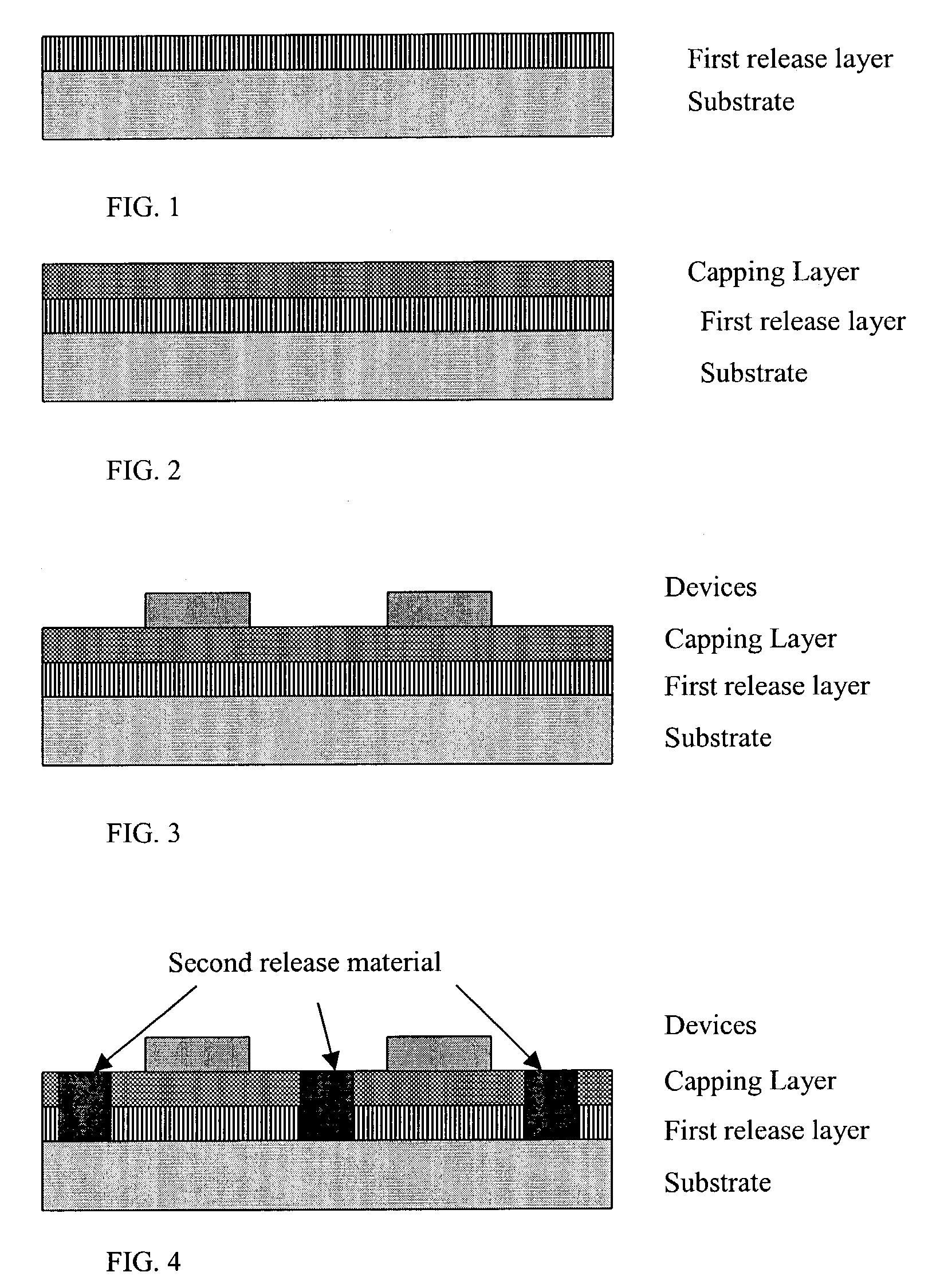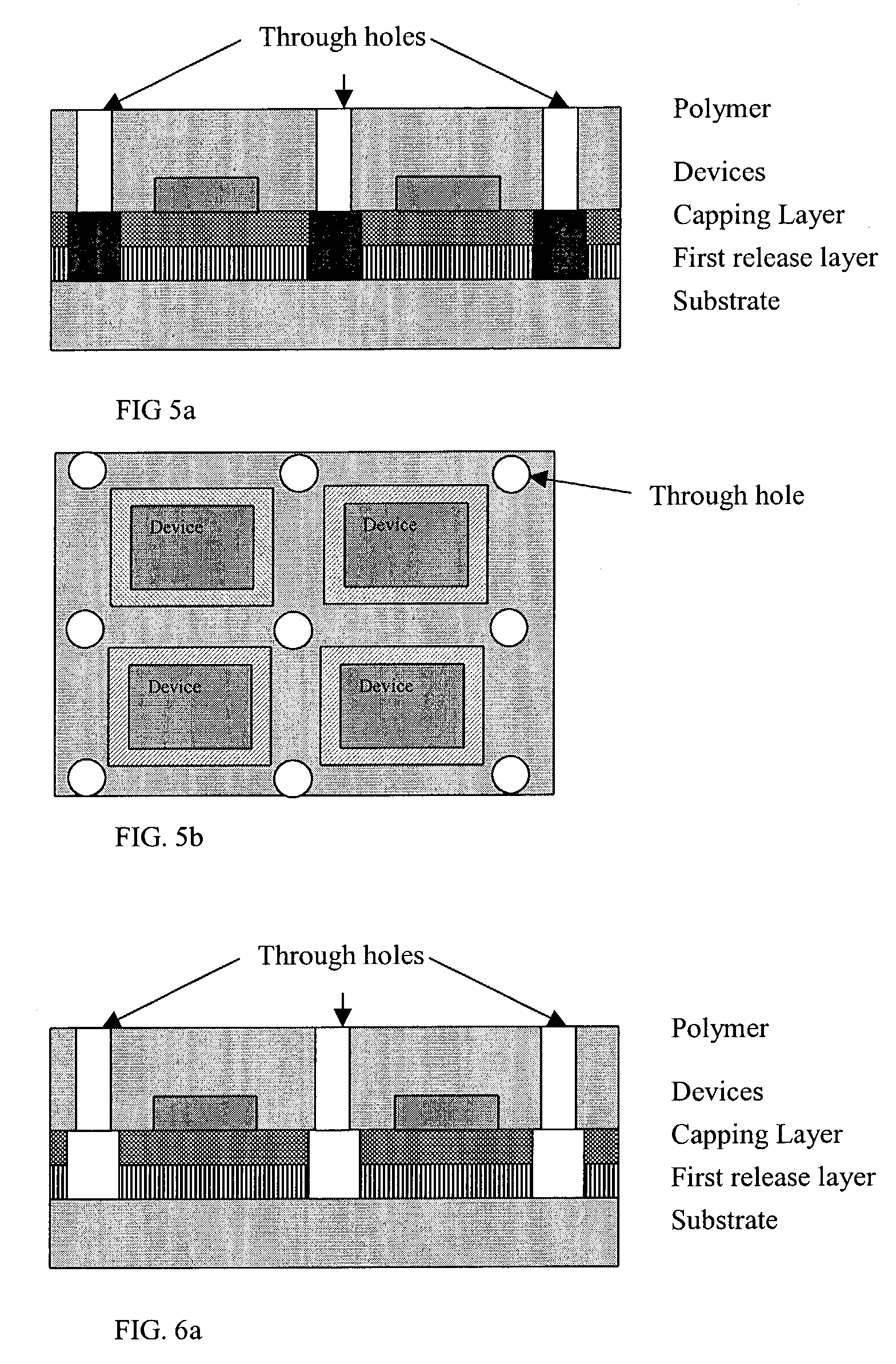Use of sacrificial layers in the manufacture of high performance systems on tailored substrates
a technology of sacrificial layers and tailored substrates, which is applied in the direction of sustainable manufacturing/processing, instruments, and final product manufacturing, can solve the problems of system directly on non-conventional substrates, etc., to achieve the effect of strengthening the bonding of the top layer
- Summary
- Abstract
- Description
- Claims
- Application Information
AI Technical Summary
Benefits of technology
Problems solved by technology
Method used
Image
Examples
example process
FLOWS
(1) Example Process Using Principally Vertical Access of Removal Agent
[0068]FIGS. 1-8 illustrate an examplary process flow using a vertical access scheme for the removal process. FIG. 1 depicts a sacrificial (first release) layer deposited on a smooth, “mother” substrate such as glass, quartz, fused silica, metal sheet, silicon, or any other flat-surfaced material. After deposition on the mother substrate the sacrificial is stabilized with one of the processes mentioned above such as annealing. One or more intermediate layers may be positioned beneath this sacrificial layer, if desired. FIG. 2 illustrates the deposition of a capping layer. This is the layer upon which the system devices will be fabricated (See FIG. 3). It is the first of the “building layers”. All deposition steps may be accomplished by a variety of means including spin-on approaches, physical deposition, chemical deposition, and chemical reactions. This capping layer also protects the sacrificial layer and, in...
PUM
| Property | Measurement | Unit |
|---|---|---|
| temperatures | aaaaa | aaaaa |
| temperatures | aaaaa | aaaaa |
| surface area | aaaaa | aaaaa |
Abstract
Description
Claims
Application Information
 Login to View More
Login to View More - R&D
- Intellectual Property
- Life Sciences
- Materials
- Tech Scout
- Unparalleled Data Quality
- Higher Quality Content
- 60% Fewer Hallucinations
Browse by: Latest US Patents, China's latest patents, Technical Efficacy Thesaurus, Application Domain, Technology Topic, Popular Technical Reports.
© 2025 PatSnap. All rights reserved.Legal|Privacy policy|Modern Slavery Act Transparency Statement|Sitemap|About US| Contact US: help@patsnap.com



